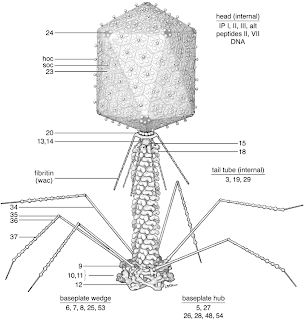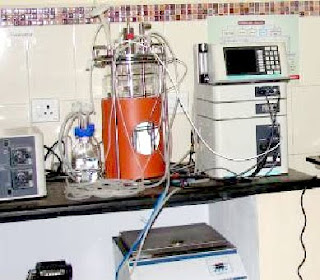
Flowering plants reproduced by two methods; sexual and vegetative. By sexual method, seeds are produced which on germination form new plants. whereas vegetative reproduction is the formation of new plants from some vegetative part of plants like root, stem, leaf or bud. A vegetative part, capable of forming a new plant, always possesses a growing point or a bud. It also must have sufficient food for the early growth of new plants. Vegetative reproduction is seen in several plants. It is only method of reproduction in plants which do not flower and seed naturally, e.g., Pineapple, Banana, Sugarcane, etc. It is also being used by farmers to propagate the desired verieties quickly.
Types of vegetative reproductionI. Natural vegetative reproductionII. Artificial vegetative reproductionNatural vegetative reproductionVegetative reproduction is found mostly in the perennial plants. These plants propagate and reproduce naturally. Any part of the plants may accomplish vegetative reproduction. The various parts of the plants used for natural vegetative propagation are as follows:1. Root – Roots of some plants like Shisham, Guava, Poplar, Rose, etc. develop adventitious buds on them. On being separated from the parent plants or the removal of the aerial part, these roots develop into new plants. Some tuberous adventitious roots besides possessing adventitious buds contain sufficient quantities of food, e.g., Sweet potato, Dahlia, Asparagus. If sown in the soil these roots produce several leafy shoots which are known as slips. These slips develop their own roots. These roots are separated out into pieces and then planted in the soil.2. Underground stems – Underground stems are also capable of showing vegetative reproduction and form new plants. Vegetative propagation in some underground stems are discussed below.a) Suckers – A number of short underground stem branches known as suckers arise at the base of an aerial shoot. They grow into aerial branches which develop adventitious roots and new suckers at their bases. When these suckers are separated, a number of independent plants are developed, e.g., Mint, Chrysanthemum.b) Rhizomes – Rhizomes are the modified stems which have may buds and sufficient stored food. A piece of rhizomes containing a bud can give rise to a new plant. This method is adopted in agriculture in the propagation of plant like Banana, Ginger, Turmeric, etc. The rootstock rhizome of banana is very large and bears a number of buds. For vegetative propagation, the rhizome is cut into large pieces and planted into soil.c) Corms – Like rhizomes, the corms also have sufficient amount of stored food. They also bears many buds in the axils of scales present on the nodes. Under favourable conditions, all or several buds produce new shoots using the food stored in the corm. Each new shoot stores food at its base and produces a new corm. Examples are colocasia, crocus, freesia, etc.d) Bulb – A bulb is underground stem which has a number of buds. On being separated and planted, these buds give rise to new plants e.g., Garlic, Narcissus. Onion can also be propagated by bulb but multiplication by seeds is more economical.e) Tubers – A stem tuber is a swollen apical part of an underground stem branch which is known as sucker. It bears a number of nodes called eyes. Each eye possesses few buds. If the whole tuber is sown in the soil, only the terminal buds sprout because of apical dominance. Therefore, a tuber is cut into pieces, with each having one or more eyes. These pieces are then planted in the soil. New plants are produced from the buds presents on the eyes. Example – Potato
Types of vegetative reproductionI. Natural vegetative reproductionII. Artificial vegetative reproductionNatural vegetative reproductionVegetative reproduction is found mostly in the perennial plants. These plants propagate and reproduce naturally. Any part of the plants may accomplish vegetative reproduction. The various parts of the plants used for natural vegetative propagation are as follows:1. Root – Roots of some plants like Shisham, Guava, Poplar, Rose, etc. develop adventitious buds on them. On being separated from the parent plants or the removal of the aerial part, these roots develop into new plants. Some tuberous adventitious roots besides possessing adventitious buds contain sufficient quantities of food, e.g., Sweet potato, Dahlia, Asparagus. If sown in the soil these roots produce several leafy shoots which are known as slips. These slips develop their own roots. These roots are separated out into pieces and then planted in the soil.2. Underground stems – Underground stems are also capable of showing vegetative reproduction and form new plants. Vegetative propagation in some underground stems are discussed below.a) Suckers – A number of short underground stem branches known as suckers arise at the base of an aerial shoot. They grow into aerial branches which develop adventitious roots and new suckers at their bases. When these suckers are separated, a number of independent plants are developed, e.g., Mint, Chrysanthemum.b) Rhizomes – Rhizomes are the modified stems which have may buds and sufficient stored food. A piece of rhizomes containing a bud can give rise to a new plant. This method is adopted in agriculture in the propagation of plant like Banana, Ginger, Turmeric, etc. The rootstock rhizome of banana is very large and bears a number of buds. For vegetative propagation, the rhizome is cut into large pieces and planted into soil.c) Corms – Like rhizomes, the corms also have sufficient amount of stored food. They also bears many buds in the axils of scales present on the nodes. Under favourable conditions, all or several buds produce new shoots using the food stored in the corm. Each new shoot stores food at its base and produces a new corm. Examples are colocasia, crocus, freesia, etc.d) Bulb – A bulb is underground stem which has a number of buds. On being separated and planted, these buds give rise to new plants e.g., Garlic, Narcissus. Onion can also be propagated by bulb but multiplication by seeds is more economical.e) Tubers – A stem tuber is a swollen apical part of an underground stem branch which is known as sucker. It bears a number of nodes called eyes. Each eye possesses few buds. If the whole tuber is sown in the soil, only the terminal buds sprout because of apical dominance. Therefore, a tuber is cut into pieces, with each having one or more eyes. These pieces are then planted in the soil. New plants are produced from the buds presents on the eyes. Example – Potato
cricinfro cricinfro cricinfro cricinfro cricinfro cricinfro cricinfro



















